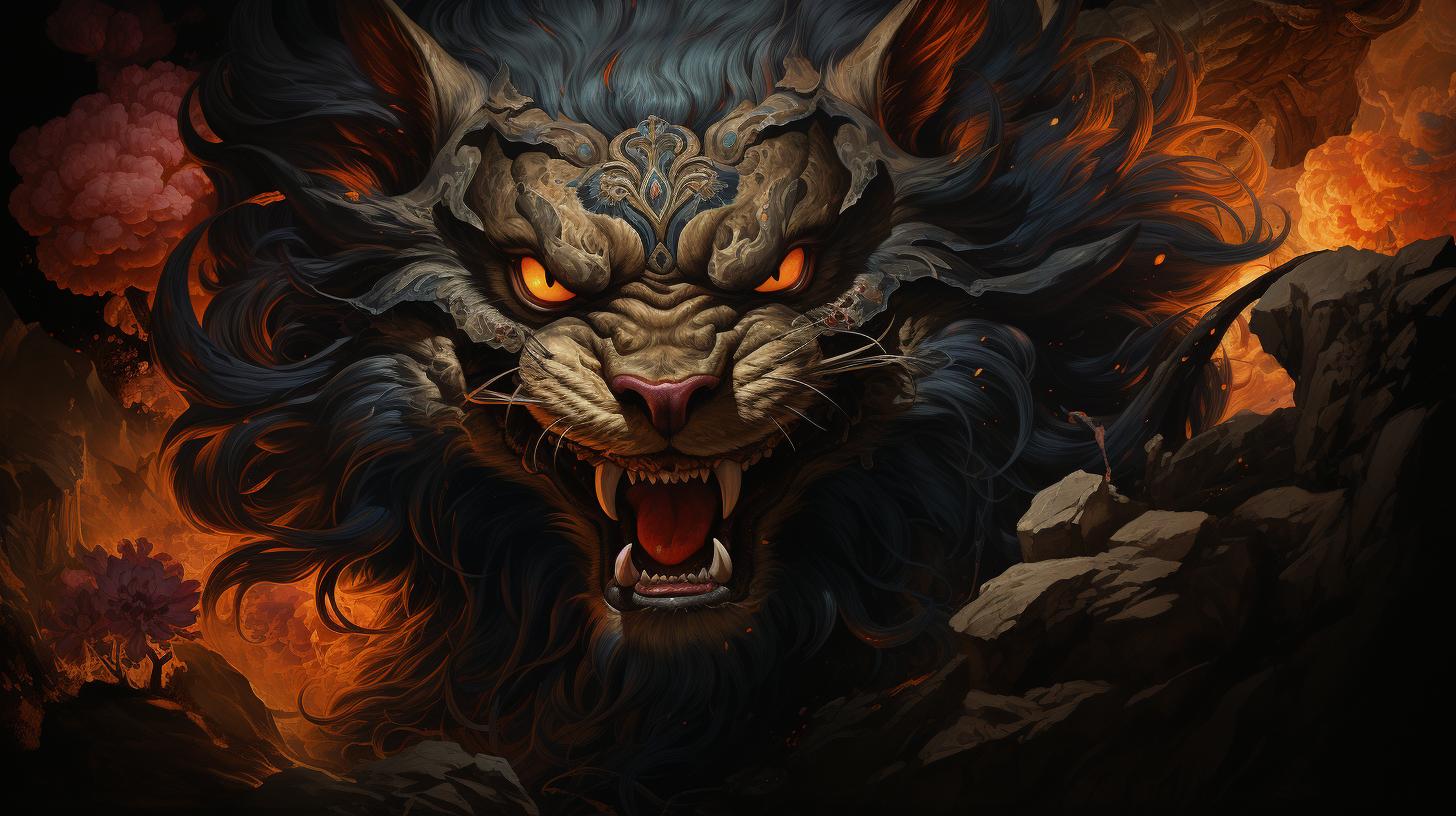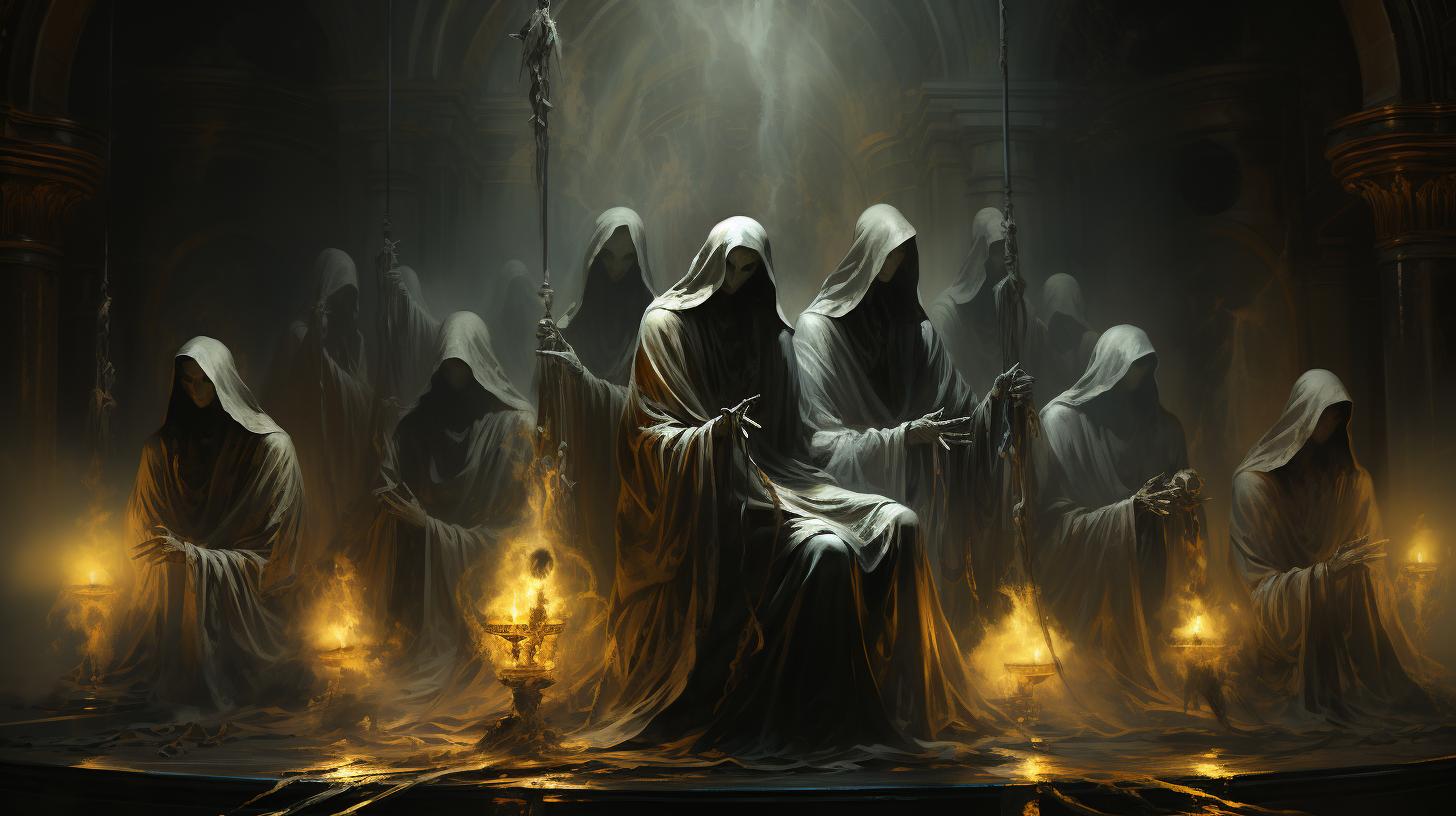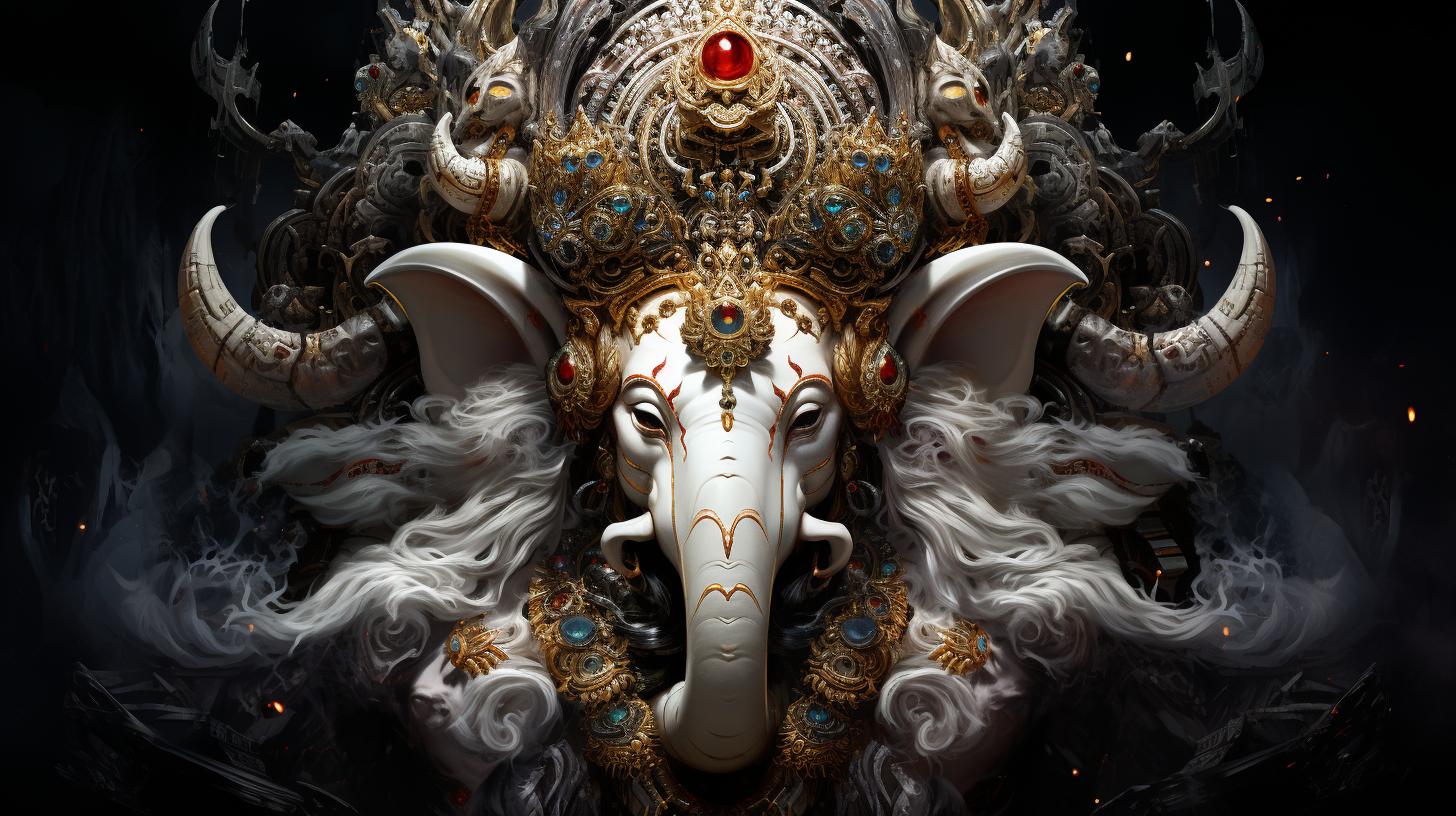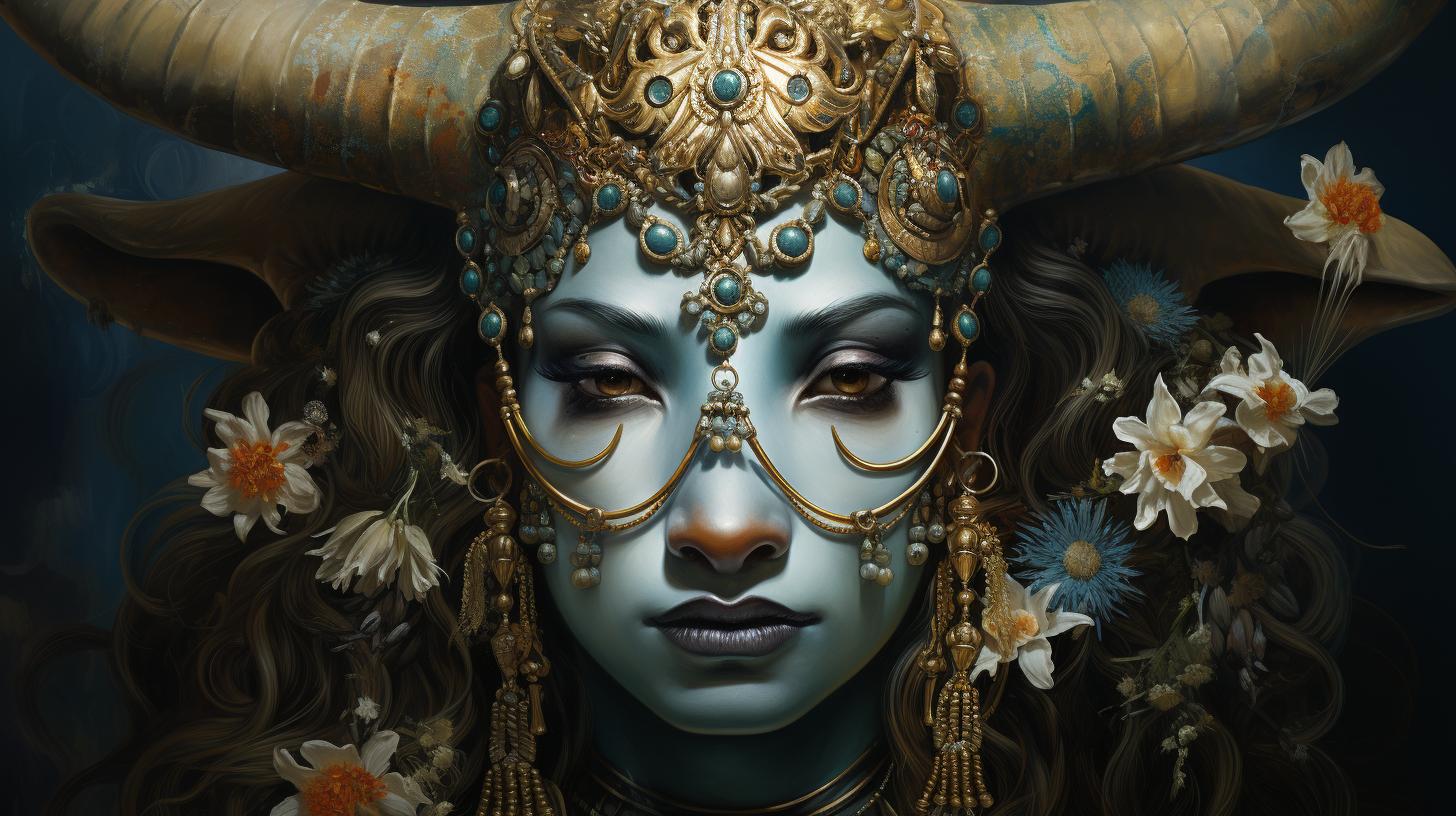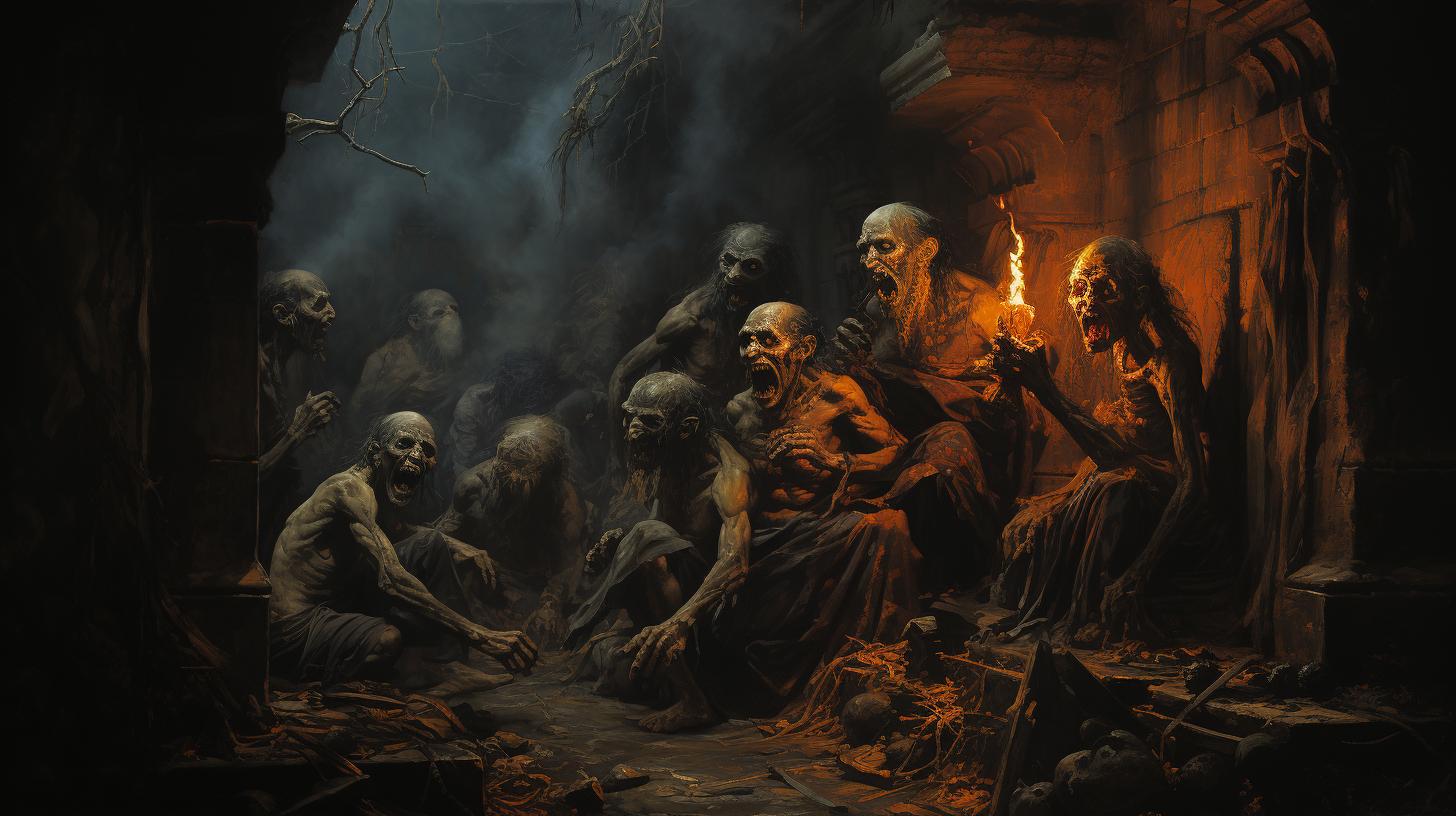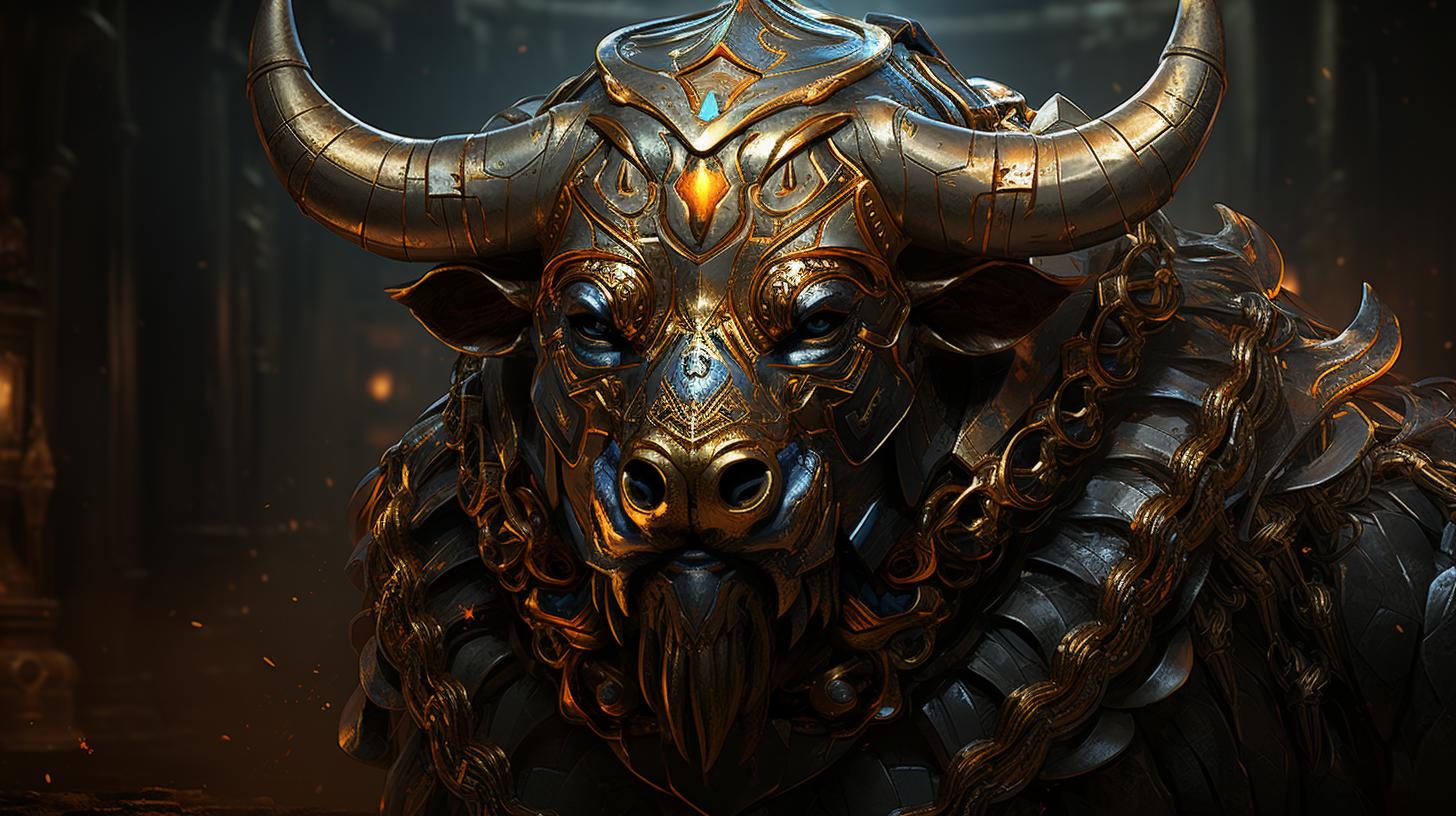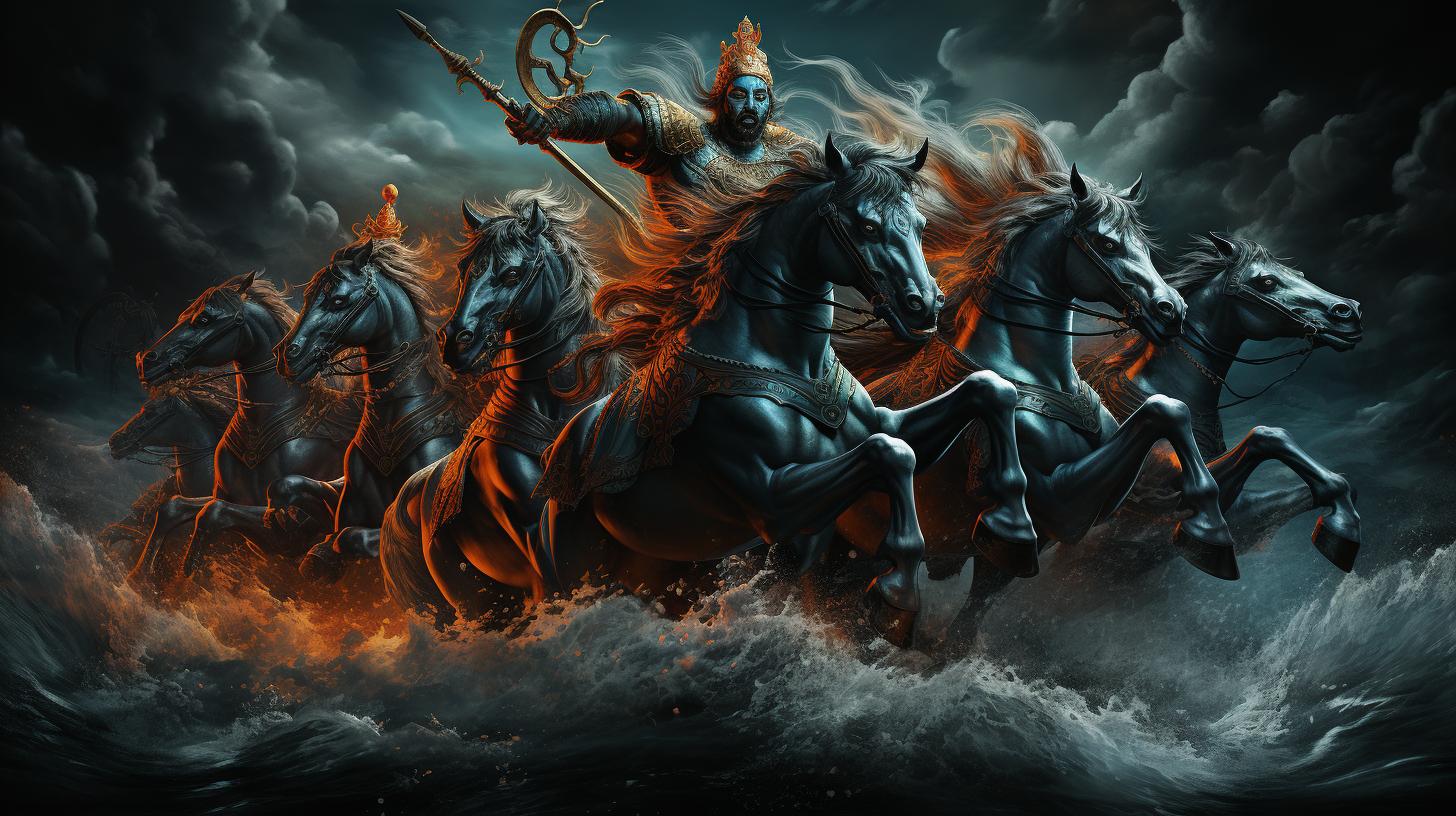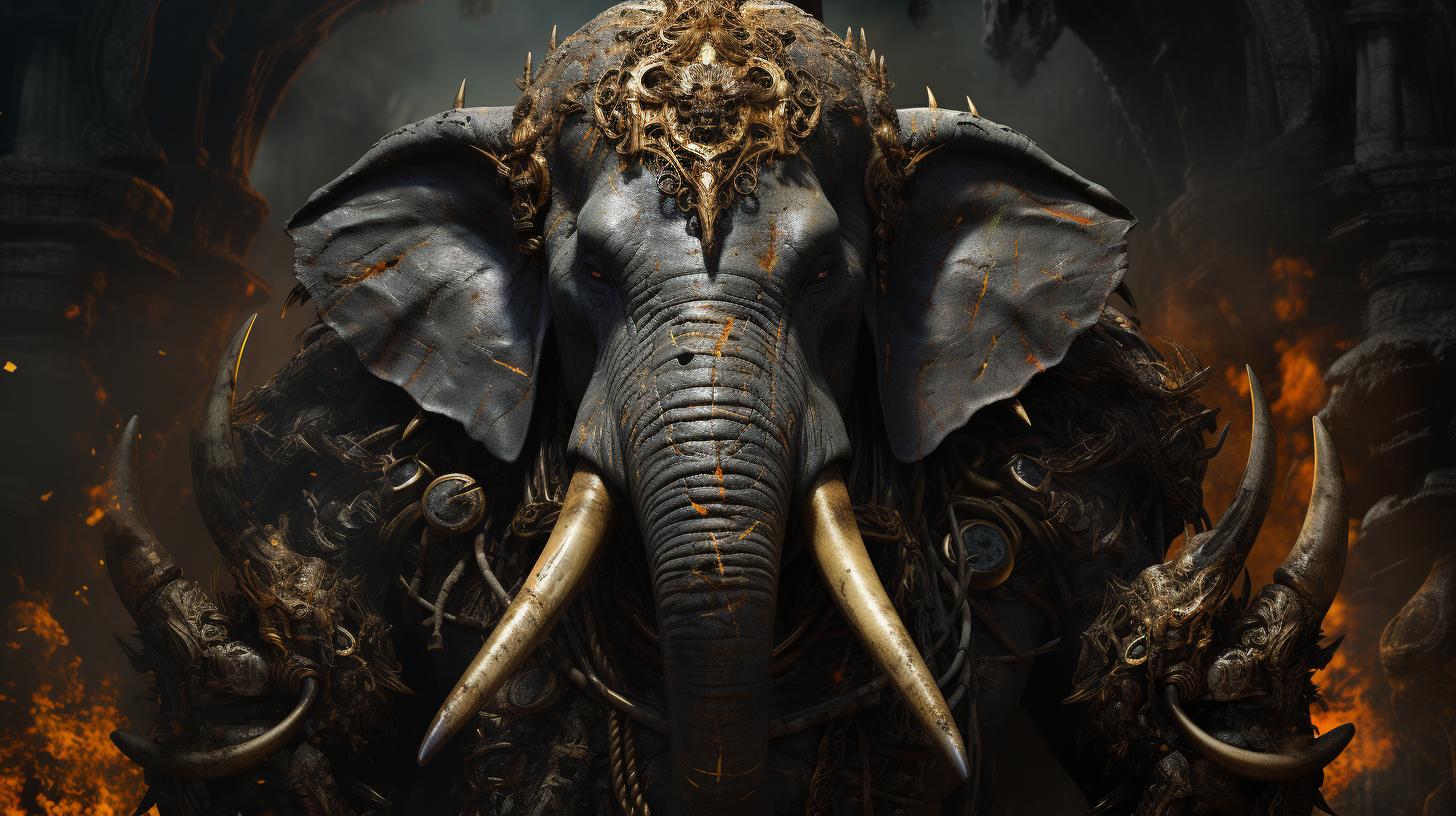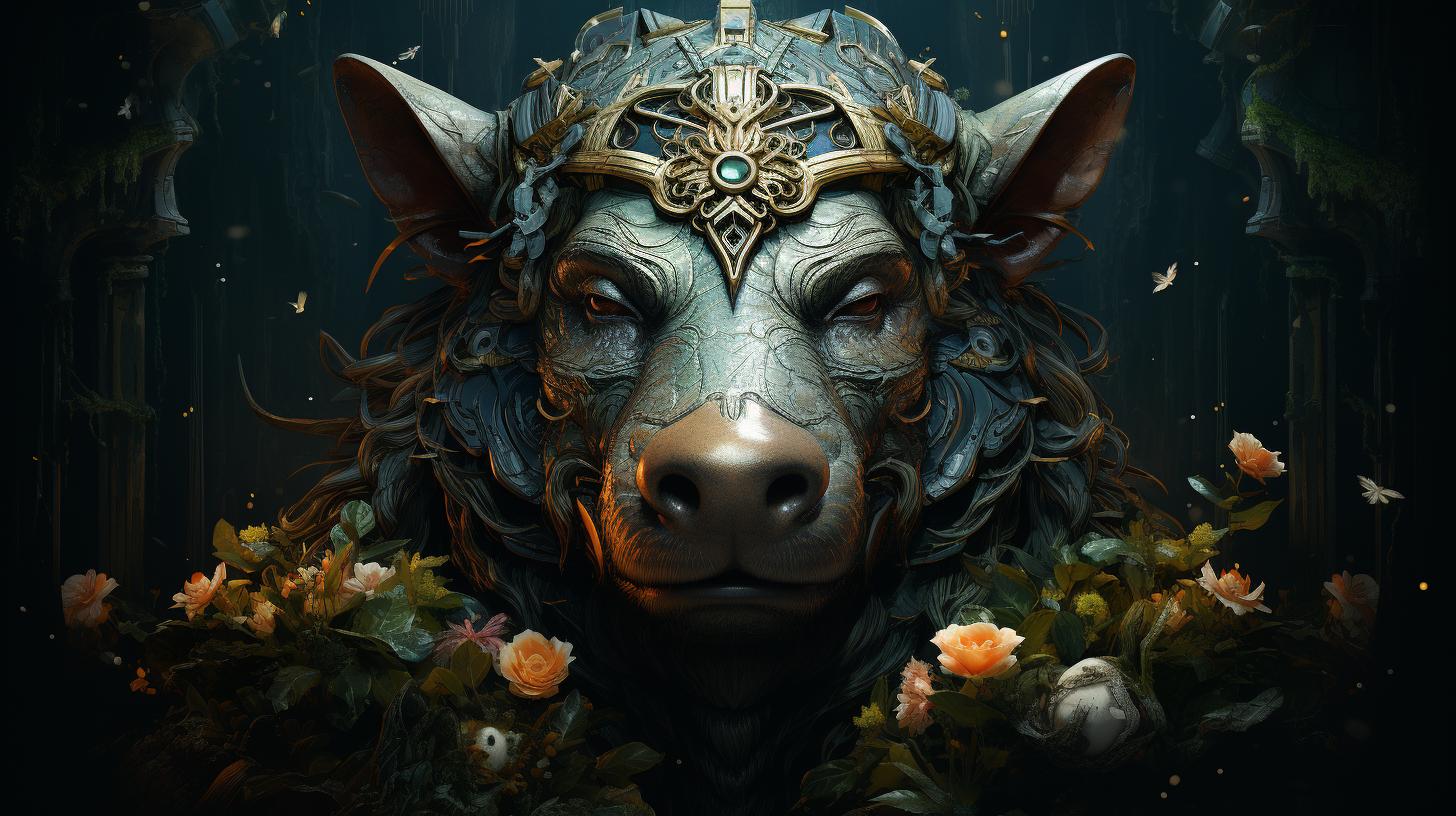‘Rakshasa Myth: Unveiling the Terrifying Beasts of Hindu Mythology’
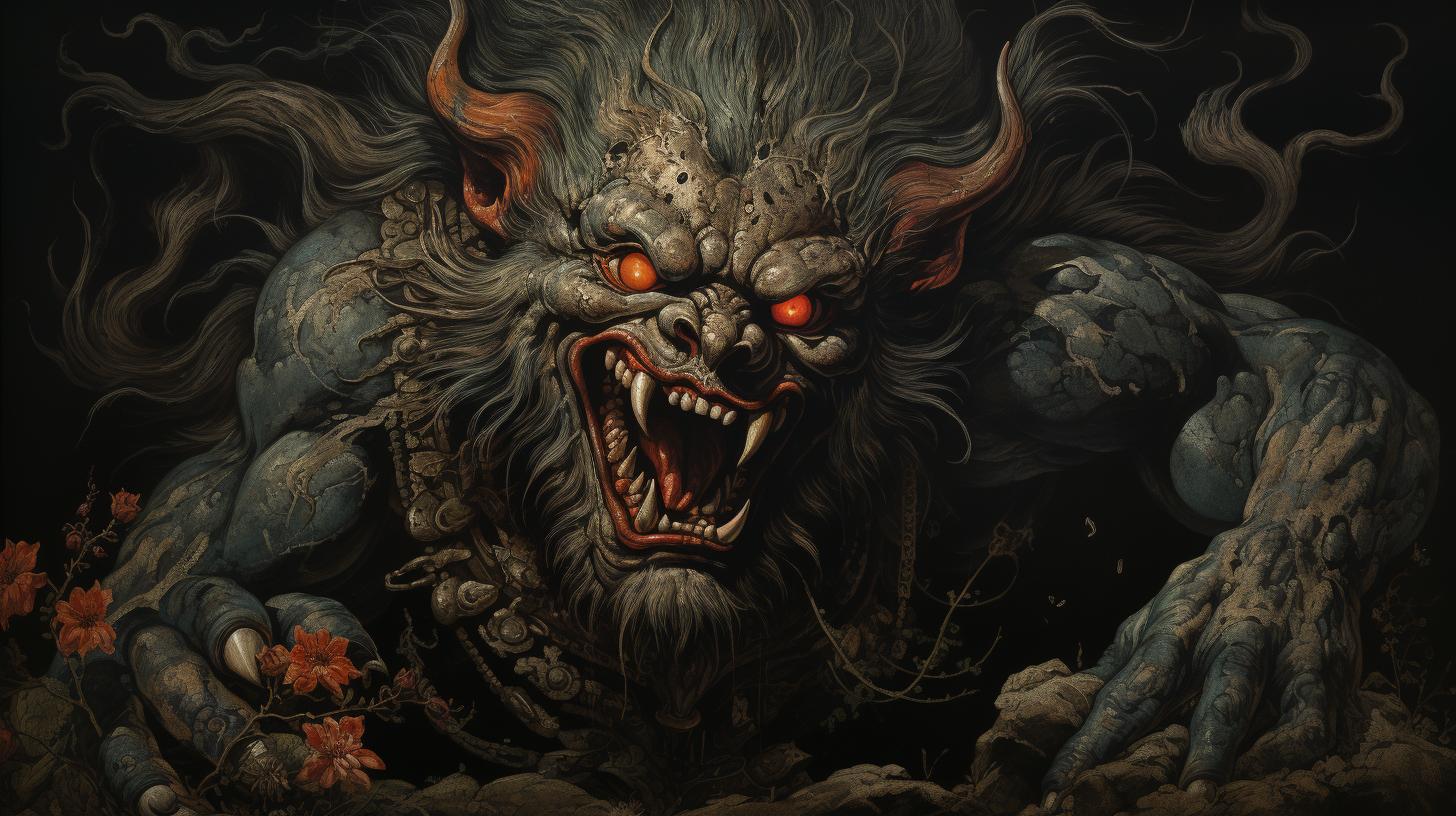
The Rakshasa myth is an intriguing part of Hindu mythology, featuring sinister and monstrous beings. These malevolent creatures possess supernatural powers, including the ability to shape-shift and utilize illusions.
Rakshasas play significant roles in Hindu epics like the Ramayana and the Mahabharata, serving as formidable warriors and illusionists. In the Ramayana, they are the primary antagonists, known for their deceitful tactics and the kidnapping of Sita. Rakshasas are also depicted in various art forms, such as Rajasthani paintings and sculptures in Angkor, Cambodia.
Explore the fascinating world of Rakshasa mythology and its significance in Hindu beliefs.
Overview of Rakshasa Mythology
The Rakshasa myth is a fascinating aspect of Hindu mythology that portrays malevolent and monstrous beings known as Rakshasas. These creatures are deeply ingrained in the ancient Hindu epics, such as the Ramayana and the Mahabharata, where they play significant roles as formidable warriors and illusionists.
Rakshasas are characterized by their fearsome appearance and possess supernatural powers. They are notorious for their ability to shape-shift, fly, and create illusions, allowing them to change their size and assume the form of any creature they desire.
The female counterpart of a Rakshasa is known as a Rakshasi.
Within the world of the Ramayana and the Mahabharata, the Rakshasas form a populous race. They are skilled warriors, adept magicians, and illusionists.
Engaging in battles, they fight alongside both the forces of good and evil. Some Rakshasas specifically emerge on the battlefield during the height of the carnage, displaying their insatiable hunger for human flesh.
Several prominent Rakshasas are mentioned in these epic tales, including Tāṭakā, Mārīca, Rāvaṇa, Hidimba, Ghatotkacha, and Bakasura. These legendary creatures bring a sense of danger and intrigue to the narrative, contributing to the rich tapestry of Hindu mythology.
Throughout the Ramayana, the Rakshasas are depicted as the primary antagonists, embodying maliciousness and aggression. They are infamous for their ability to shape-shift and deceive, and it is their kidnapping of Sītā, the wife of Rama, that fuels much of the epic’s conflict.
The Rakshasas reside in the forests south of the Ganges plains and establish their stronghold in the fortified island of Laṅkā, present-day Sri Lanka. Within Laṅkā, the Rakshasas live in a complex society comparable to that of humans in Ayodhya, with some, like Vibhishana, exhibiting moral qualities.
Bhima, one of the Pandava heroes, serves as the nemesis of the Rakshasas inhabiting the forests. He defeats Hidimba, a cannibalistic Rakshasa, and begets a Rakshasa son named Ghatotkacha, who fights alongside the Pandavas during the Kurukshetra War.
Bhima also eliminates Bakasura, a man-eating Rakshasa who terrorizes the human population by demanding regular offerings of food.
Rakshasas have also found their place in the realm of art and folklore.
Rajasthani paintings depicting the Ramayana often feature terrifying depictions of Rakshasas with menacing fangs, grotesque eyes, and wielded weapons. Additionally, sculptures in sites like Angkor, Cambodia, showcase Rakshasas in the churnings of the Milk Ocean.
The Rakshasa myth holds deep symbolism and metaphorical interpretations within Hindu beliefs. They represent the eternal struggle between good and evil, with Rakshasas embodying the darker side of human nature. Despite their malevolence, there are intriguing complexities to their characters, prompting deeper contemplation of moral ambiguity.
As we explore the Rakshasa myth, it becomes apparent that misconceptions often arise. In the FAQs section, we address common misunderstandings, such as whether Rakshasas are solely evil beings, their ability to change forms, and the existence of historical evidence.
Join us as we embark on a journey through the captivating world of Rakshasa mythology, delving into its origins, characteristics, roles in Hindu epics, artistic representations, and its significance in Hindu beliefs.
Origins and Characteristics of Rakshasas
Rakshasas, supernatural beings in Hindu mythology, have a fascinating origin and distinct characteristics. They are known for their menacing appearance and formidable abilities, making them fearsome figures in Hindu folklore and epics.
Physical Appearance and Abilities
Rakshasas are often depicted as ferocious and grotesque creatures, possessing physical attributes that inspire fear. They have fearsome fangs, hideous eyes, and are often shown carrying terrifying weapons. These monstrous beings have the power to change their form, granting them the ability to assume the appearance of any creature.
Their supernatural abilities also include the power of illusion, allowing them to alter their size and deceive others.
Role in Hindu Epics: Ramayana and Mahabharata
Rakshasas play significant roles in Hindu epics, most notably in the Ramayana and the Mahabharata. In these ancient texts, they are portrayed as powerful warriors, skilled magicians, and illusionists. Rakshasas often participate in epic battles, aligning themselves with both the forces of good and evil.
Some rakshasas have a penchant for devouring humans and emerge during the bloody chaos of the battlefield.
The Ramayana prominently features rakshasas as antagonistic characters. They are known for their ability to shape-shift, using their deceptive powers to abduct Sita, the wife of Rama. Rakshasas reside in the forests south of the Ganges and in the fortress of the island of Lanka.
In Lanka, they live in a complex society comparable to the human society of Ayodhya, where certain rakshasas, such as Vibhishana, exhibit moral characteristics.
The Mahabharata involves rakshasas in the epic war of Kurukshetra.
One of the Pandava heroes, Bhima, acts as the nemesis of the rakshasas inhabiting the forests. He slays Hidimba, a cannibal rakshasa, and fathers a rakshasa son named Ghatotkacha, who fights alongside the Pandavas in the war.
Bhima also defeats Bakasura, a cannibal rakshasa terrorizing the human population.
The rakshasas’ dualistic nature, participating in conflicts as both allies and adversaries, showcases their complex role in Hindu epics.
Rakshasas in the Ramayana
The Ramayana, an epic tale of ancient Hindu mythology, features the notorious rakshasas as key figures.
Known for their antagonistic roles, rakshasas play pivotal parts in the deception and kidnapping of Sita, the wife of the hero Rama.
Antagonistic Role: Deception and Kidnapping of Sita
Rakshasas in the Ramayana are infamous for their malevolence and trickery.
They utilize their supernatural abilities, such as shape-shifting and illusion, to deceive Rama and his companions. One prominent rakshasa involved in Sita’s abduction is Ravana, the formidable and ten-headed king of the rakshasas.
Key Rakshasas: Ravana, Kumbhakarna, and Indrajit
- Ravana: This powerful rakshasa king is the main antagonist in the Ramayana. His insatiable desire for Sita leads to the epic conflict between Rama and the rakshasa forces.
Ravana’s cunning strategies and magical powers make him a formidable adversary.
- Kumbhakarna: Ravana’s brother, Kumbhakarna, is known for his immense size and insatiable appetite. Despite his loyalty to his brother, Kumbhakarna is awakened from a deep sleep to join the rakshasa army in the war against Rama.
- Indrajit: Also known as Meghnad, Indrajit is Ravana’s son and a skilled warrior.
He possesses mystical weapons and the ability to turn invisible, making him a formidable opponent for Rama and his allies.
Rakshasas in the Mahabharata
The Mahabharata, another monumental Hindu epic, also features the presence of rakshasas. In this epic war, rakshasas play significant roles, showcasing their power and influence on the battlefield.
Involvement in the Kurukshetra War
During the Kurukshetra War, the rakshasas are seen participating on both sides of the conflict.
While some rakshasas fought alongside the Kauravas, who represent the forces of evil, others aligned themselves with the righteous Pandavas. Their involvement added an additional layer of complexity to the already intense battle.
Notable Rakshasas: Hidimba, Ghatotkacha, and Bakasura
Among the prominent rakshasas in the Mahabharata, Hidimba, Ghatotkacha, and Bakasura stand out. Hidimba, a cannibalistic rakshasa, is defeated by the Pandava hero Bhima early in the epic. Ghatotkacha, Bhima’s rakshasa son, plays a crucial role in the war, displaying his exceptional powers and wreaking havoc on the battlefield.
Similarly, Bakasura, another menacing rakshasa, terrorizes humans with his insatiable appetite until he is slain by Bhima.
The presence of these rakshasas in the Mahabharata adds depth and complexity to the narrative, showcasing the diverse and powerful entities that inhabit this rich mythological world.
Depictions of Rakshasas in Art and Folklore
Depictions of Rakshasas in art and folklore offer fascinating insights into their fearsome nature and their significance in Hindu mythology. These representations can be found in various forms, including Rajasthani paintings illustrating the epic tales of the Ramayana and sculptures found in the ancient temples of Angkor, Cambodia.
Rajasthani Paintings and Depictions in the Ramayana
Rajasthani paintings vividly depict the epic story of the Ramayana, showcasing the terrifying aspects of Rakshasas. These intricate artworks often portray Rakshasas with menacing appearances, characterized by ferocious fangs, grotesque eyes, and wielding formidable weapons.
These paintings capture the intense battles between these demonic beings and the heroic figures alike, embodying the eternal struggle between good and evil.
Sculptures in Angkor, Cambodia: The Rakshasas in Bas-Reliefs
The Angkor temples in Cambodia serve as a treasure trove of Rakshasa sculptures, showcased in intricate bas-reliefs.
These masterful carvings depict Rakshasas in various scenes, particularly in the “Churning of the Ocean of Milk” episode, where they play a significant role. These sculptures capture Rakshasas in their true form, showcasing their formidable bodies and terrifying countenances.
The attention to detail and artistry in these sculptures serve as a testament to the enduring presence and impact of Rakshasas in Hindu folklore and artistic expression.
Rakshasa Myth and Hindu Beliefs
The Rakshasa myth holds significant symbolism and metaphorical interpretations within Hindu beliefs.
This section explores the deeper meaning behind these malevolent creatures and their role in Hindu spirituality.
Symbolism and Metaphorical Interpretations
Rakshasas are often seen as representations of primal instincts and human vices. Their fierce and grotesque appearance symbolizes the darker aspects of human nature, such as anger, lust, and greed.
In a metaphorical sense, they embody the internal struggles faced by individuals who strive for self-control and spiritual enlightenment.
Furthermore, the ability of rakshasas to change form and deceive mirrors the illusions and distractions that human beings encounter on their path to enlightenment. By overcoming these illusions, one can uncover their inner strength and wisdom, transcending the influence of the rakshasas and embracing spiritual growth.
Moral Aspect: Rakshasas as Representations of Good and Evil
In Hindu mythology, rakshasas are not always depicted solely as evil beings. While many rakshasas are notorious for their malevolence, it is important to recognize that they exist within a moral framework that distinguishes between good and evil.
Some rakshasas, like Vibhishana, demonstrate moral behavior and align themselves with righteous causes.
This duality reflects the Hindu belief in the coexistence of positive and negative forces in the universe. It serves as a reminder that individuals possess the capacity for both good and evil within themselves.
By understanding and transcending their own inner rakshasas, individuals can strive towards moral rectitude and spiritual enlightenment.
Common Misconceptions and FAQs about Rakshasa Myth
Explore some of the common misconceptions and frequently asked questions about the intriguing Rakshasa myth.
Are Rakshasas solely evil beings?
Contrary to popular belief, Rakshasas are not solely evil beings. While they are often depicted as malevolent and monstrous, there are instances in Hindu mythology where Rakshasas display moral character and even aid the forces of good.
Vibhishana, a prominent Rakshasa in the Ramayana, is known for his righteousness and loyalty to Lord Rama. Therefore, it is important to recognize that Rakshasas can possess both positive and negative traits.
Can Rakshasas really change their form?
Yes, Rakshasas have the ability to change their form. They possess the power of illusion and can assume the appearance of any creature, including humans. This supernatural ability adds to their deceptive nature and makes them formidable adversaries.
However, it is worth noting that their true form is often described as fierce and terrifying, with fearsome physical characteristics.
Is there any historical evidence of Rakshasas?
Rakshasas are primarily mythological creatures, and there is no concrete historical evidence to support their existence as physical beings. They exist within the realm of Hindu mythology and are symbolic figures representing various aspects of human behavior and morality.
How are Rakshasas worshipped in Hinduism?
Rakshasas are not typically worshipped in Hinduism. While some individual Rakshasas may be revered in certain regions or folk traditions, the focus of worship in Hinduism is primarily on deities and divine entities associated with benevolence and spiritual guidance.
Rakshasas, with their malevolent nature, do not typically receive direct worship or adoration.
.











